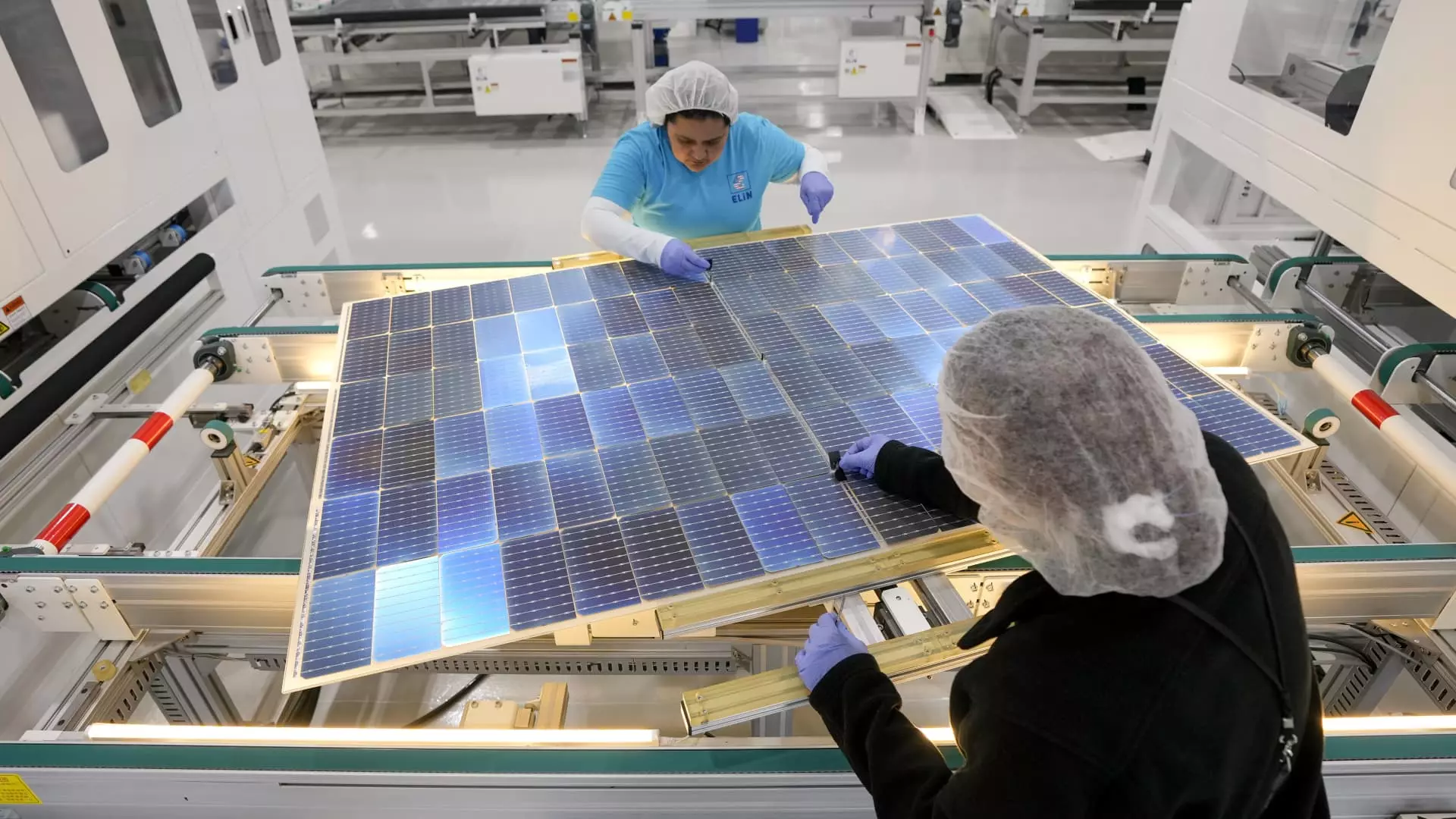The Inflation Reduction Act has ignited a manufacturing boom throughout the United States, fostering billions of dollars in investment, particularly in rural communities seeking economic development. This surge in investments has the potential to be greatly influenced by the outcome of the upcoming U.S. presidential election. The uncertainty surrounding a potential Republican victory has instilled doubt among some investors, fearing that the IRA may be weakened or entirely repealed in a worst-case scenario.
Since President Joe Biden signed the IRA into law in August 2022, companies have announced a staggering $133 billion of investments in clean energy technology and electric vehicle manufacturing, as reported by the Massachusetts Institute of Technology and the Rhodium Group. This marks a substantial increase of 305% compared to the two-year period preceding the enactment of the IRA. Overall, the IRA has spurred half a trillion dollars of investment across various sectors, including manufacturing, energy, and retail, according to data analyses.
Trevor Houser, a partner at the Rhodium Group, emphasized the transformative impact of the IRA on the manufacturing sector. The surge in new manufacturing activity, particularly in clean energy manufacturing facilities, is unparalleled in recent history. With 271 manufacturing projects for clean energy technology and electric vehicles in the pipeline, there is promise for over 100,000 job opportunities, provided these projects come to fruition.
The investments catalyzed by the IRA have been especially advantageous for rural communities, which typically do not benefit from investments in areas such as AI, tech, and finance that are predominantly concentrated in urban centers. Clean energy investments have emerged as a beacon of hope for many rural areas, attracting much-needed capital and fostering economic growth in these regions.
One notable outcome of the IRA has been the acceleration of renewable energy deployment. An impressive $108 billion has been allocated to utility-scale solar and battery storage projects, with investments in solar and battery storage experiencing a substantial increase of 56% and 130% respectively over the past two years. It is evident that mature technologies such as wind, solar generation, and electric vehicles have gained momentum and are poised for sustained growth.
Despite the promising strides made within the manufacturing sector, Trevor Houser underscored that the “manufacturing renaissance” is still in its nascent stages and remains fragile. Chris Seiple, vice chairman of Wood Mackenzie’s power and renewables group, highlighted that without the IRA, the resurgence of new factories would not have reached such heights. Former President Donald Trump’s expressed intention to dismantle the IRA poses a significant threat to the continued momentum of the manufacturing boom.
President Joe Biden’s lackluster debate performance and the looming possibility of a Republican victory have sent ripples through the clean energy industry. Clean energy stocks took a hit as investors grew apprehensive about potential policy changes under a new administration. The looming threat of the IRA being altered or rescinded raises concerns among companies and investors, leading to a climate of uncertainty.
Former President Donald Trump’s vows to curtail clean energy initiatives and bolster traditional oil, gas, and coal production pose a direct challenge to the progress made under the IRA. Trump’s allegiance to fossil fuel projects, coupled with his campaign promises to dismantle green energy incentives, has fueled apprehension among investors and stakeholders within the clean energy sector.
The Inflation Reduction Act has been instrumental in driving manufacturing investments, particularly in the realm of clean energy and electric vehicles. The significant influx of capital and job opportunities generated by the IRA underscores its pivotal role in revitalizing the manufacturing sector. However, ongoing political uncertainties and the looming threat of policy changes pose challenges to the sustainability of this manufacturing renaissance. As stakeholders navigate this landscape of uncertainty, the future trajectory of manufacturing investments hinges on the outcome of the impending U.S. presidential election.

